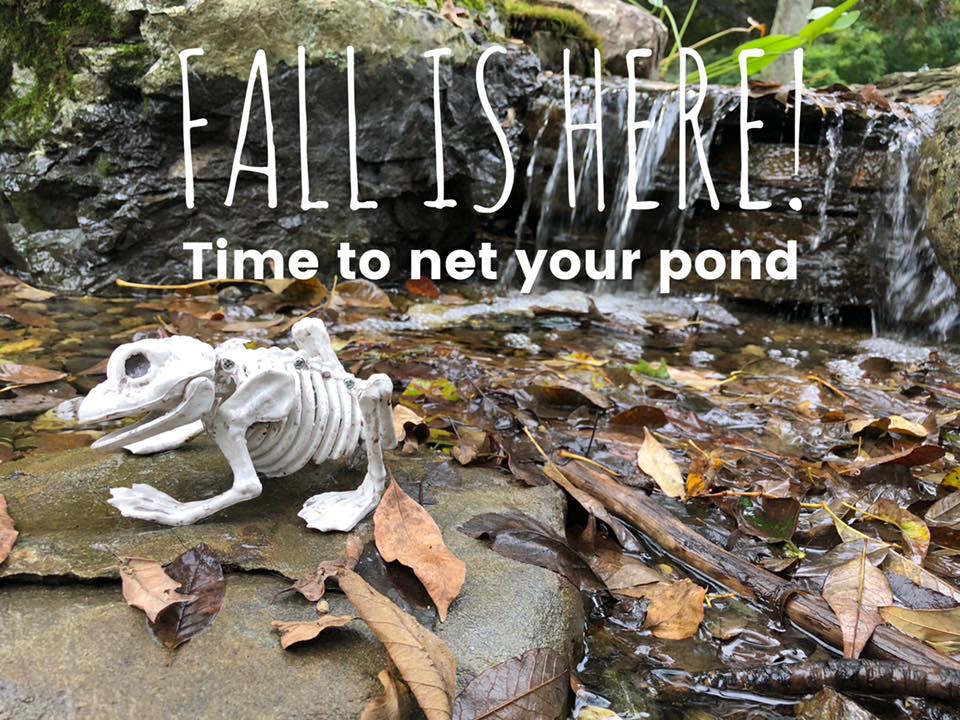As the vibrant colors of fall start to emerge, many pond owners face the challenge of keeping their water features free from fallen leaves, debris, and predators. Pond netting is an essential tool for maintaining the health and cleanliness of your pond, and it can also help safeguard your fish. Here’s everything you need to know about selecting and using pond netting effectively.
Why Pond Netting is a Must-Have
Pond netting serves multiple purposes that make it a critical addition to your pond maintenance routine:
- Debris Control: Fallen leaves and other debris can quickly accumulate in your pond, disrupting the water’s balance and clogging filtration systems. Netting acts as a barrier, preventing debris from entering the water and reducing the frequency of pond cleanings.
- Fish Protection: Herons, raccoons, and other predators view your pond as a convenient source of food. Pond netting creates a protective layer over your water feature, making it difficult for predators to reach your fish.
- Algae Prevention: When organic material like leaves decomposes in your pond, it releases nutrients that encourage algae growth. By keeping debris out, netting helps maintain clearer water and healthier conditions for your aquatic life.
Choosing the Right Pond Netting
Selecting the appropriate netting for your pond depends on several factors:
- Mesh Size: Smaller mesh sizes are more effective at keeping out fine debris and smaller predators, but they may also be more prone to sagging under heavy loads. A mesh size between 1/4 and 1/2 inch is typically ideal for most ponds.
- Material: High-quality, UV-resistant materials are recommended for pond netting as they withstand weather exposure and last longer. Avoid cheaper, flimsy nets that may tear easily or degrade quickly.
- Ease of Installation: Look for netting that is easy to install and remove. Some netting systems come with stakes or frames to support the net, ensuring it stays taut over the pond.
Installing Pond Netting
Proper installation is key to the effectiveness of your pond netting. Follow these steps for best results:
- Secure the Edges: Use stakes or rocks to anchor the netting securely around the pond’s perimeter. Ensure the net is tight enough to prevent debris from slipping underneath but has enough give to avoid tearing under pressure.
- Support the Center: If your pond is large, consider using a frame or support system in the center to keep the netting from sagging. This will allow debris to roll off the net rather than collecting in the middle.
- Check Regularly: Regularly inspect the netting for any sagging, tears, or trapped debris. Promptly address any issues to maintain the net’s effectiveness.
Seasonal Use and Storage
Pond netting is most commonly used during the fall, but it can also be beneficial in the spring when trees release seeds and flowers. Once the main debris-fall season is over, carefully remove the netting, clean it, and store it in a dry place for the next season.
The Benefits of Pond Netting
Investing in pond netting is a simple yet highly effective way to keep your pond looking its best year-round. It reduces the time and effort required for maintenance, protects your fish, and helps maintain a balanced ecosystem. Whether you’re preparing for autumn or just looking to add an extra layer of protection, pond netting is an essential tool for every pond owner.
Ready to Protect Your Pond? We’re Here to Help!
Don’t wait until leaves and debris start piling up in your pond. Let our experts help you choose the perfect pond netting solution to keep your water feature clean and your fish safe. Whether you need advice on selecting the right netting or want professional installation, we’re here to take care of all your pond netting needs.
Contact us today to ensure your pond stays beautiful and healthy throughout the season. Give us a call or visit our website to get started. Your pond deserves the best protection—let us provide it for you!




